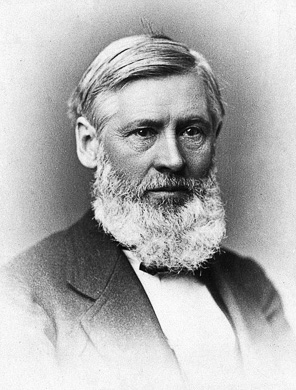BOTANY FOR YOUNG PEOPLE AND COMMON SCHOOLS
How Plants Grow
A Simple Introduction to Structural Botany
by Asa Gray
Originally published in 1858 and now in the public domain.
CHAPTER II.
HOW PLANTS ARE PROPAGATED OR MULTIPLIED IN NUMBERS.
SECTION I. -- How Propagated from Buds.
154. PLANTS not only grow so as to increase in size or extent, but also multiply, or increase their numbers.
This they do at such a rate that almost any species, if favorably situated, and not interfered with by other plants or by animals, would soon cover the whole face of a country adapted to its life.
155. Plants multiply in two distinct ways, namely, by Buds and by Seeds.
All plants propagate by seeds, or by what answer to seeds. Besides this, a great number of plants, mostly perennials, propagate naturally from buds.
156. And almost any kind of plant may be made to propagate from buds, by taking sufficient pains. The gardener multiplies plants artificially in this way,
157. By Layers and Slips or Cuttings. In laying or layering, the gardener bends a branch down to the ground, sometimes cutting a notch at the bend, or removing a ring of bark, to make it strike root the quicker, and covers it with earth; then, after it has rooted, he cuts off the connection with the parent stem. Thus he makes artificial stolons (99).
Plants which strike root still more readily, such as Willows, he propagates by cuttings or slips, that is, by pieces of stem, containing one or more buds, thrust into the ground or into flower-pots. If kept moist and warm enough, they will generally strike root from the cut end in the ground, and develop a bud above, so forming a new plant out of a piece of an old one. Many woody plants, which will not so readily grow from slips, can often be multiplied
158. By Grafting or Budding. In grafting, the cutting is inserted into a stem or branch of another plant of the same species, or of some species like it, as of the Pear into the Quince or Apple; where it grows and forms a branch of the stock (as the stem used to graft on is called). The piece inserted is called a scion.
In grafting shrubs and trees it is needful to make the inner bark and the edge of the wood of the scion correspond with these parts in the stock, when they will grow together, and become as completely united as a natural branch is with its parent stem.
In budding or inoculating, a young bud, stripped from one fresh plant, is inserted under the bark of another, usually in summer; there it adheres and generally remains quiet, as it would have done on the parent bough, until the next spring, when it grows just as if it belonged there.
159. The object of all these ways of artificial propagation from buds is to preserve and to multiply choice varieties of a species which would not be perpetuated from seed. For as the fruit of all the natural branches is alike, so it remains essentially unaltered when borne by branches which are made to grow as artificial branches of another plant, or to take root in the ground as a separate plant. The seeds of an apple or other fruit cannot be depended upon to reproduce the very same sort of apple, that is, an apple of the very same flavor or goodness.
The seeds will always reproduce the same species, but not the individual peculiarities. These are perpetuated in propagation from buds. This kind of propagation is therefore very important to the cultivator. It takes place naturally in many plants,
160. By Stolons, Offsets, Runners or Suckers, in ways which have already been described (99 to 103, and Fig. 74). These are all forms of natural layering, and they must have taught the gardener his art in this respect. For he merely imitates Nature, or rather sets her at work and hastens her operations. Also,
161. By Tubers (74, 75, Fig. 59, 60). These are under-ground branches with lively buds, well charged with prepared nourishment, rendering them more independent and surer to grow.
Potatoes and Ground-Artichokes are familiar illustrations of the kind. They are propagated year after year by their buds, or eyes, being very seldom raised from the seed. Each annual crop of tubers is set free at maturity, by the death of all the rest of the plant.
162. By Corms, Bulbs, and Bulblets, as explained in paragraphs 77 and 106 to 109.
Fig. 76 shows a corm or solid bulb of Crocus, which itself grew by feeding upon its parent, whose exhausted remains are seen underneath; it has already produced a crop of buds, to grow in their turn into another generation of corms, consuming their parent in the process. Bulbs produce a crop of new bulbs from buds in the axils of some of their scales. Tulips, Daffodils, and Garlics propagate very freely in this manner, not only keeping up the succession of generations, but multiplying greatly their numbers.
Analysis of the Section.
154. Plants multiply as well as grow. 155. In two ways; all plants by seeds, many by buds. 156. Most kinds may be propagated by buds artificially. 157. By Layers and Slips or Cuttings. 158. By Grafting or Budding. 159. Object gained by this mode of propagation. 160. It takes place naturally, by Stolons, Offsets, &c. 161. By Tubers. 162. By Corms, Bulbs, and Bulblets.

